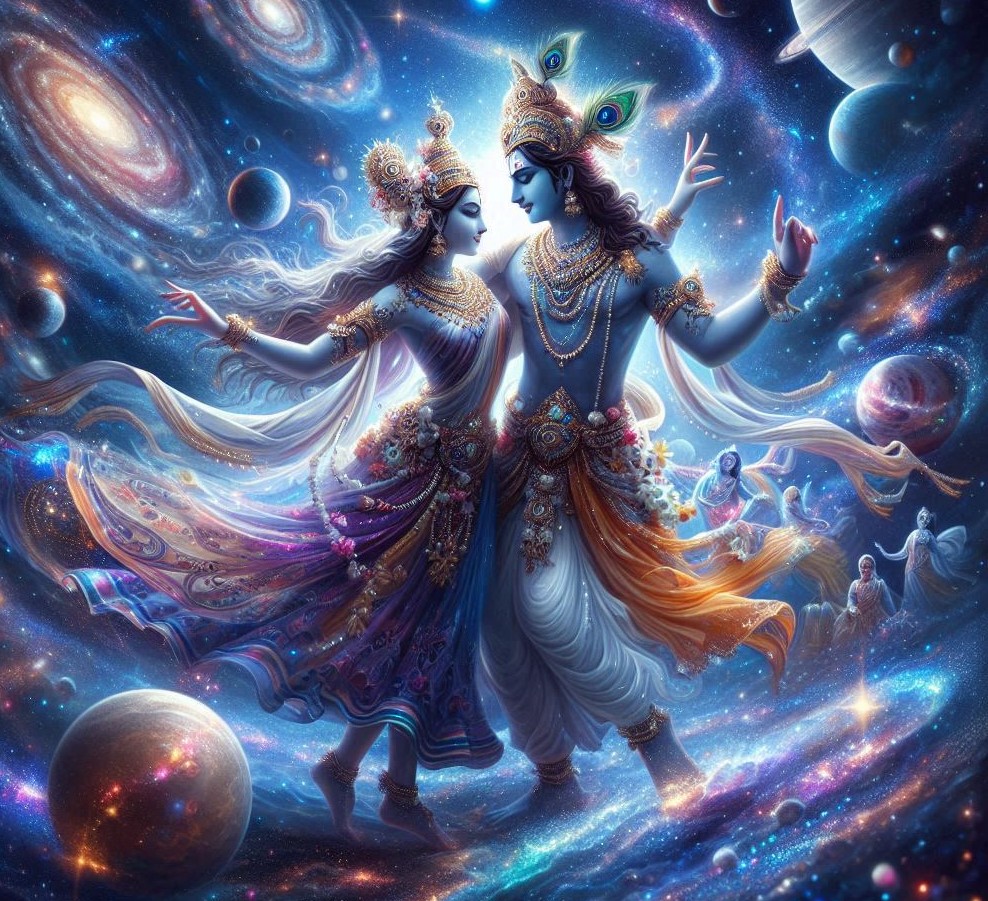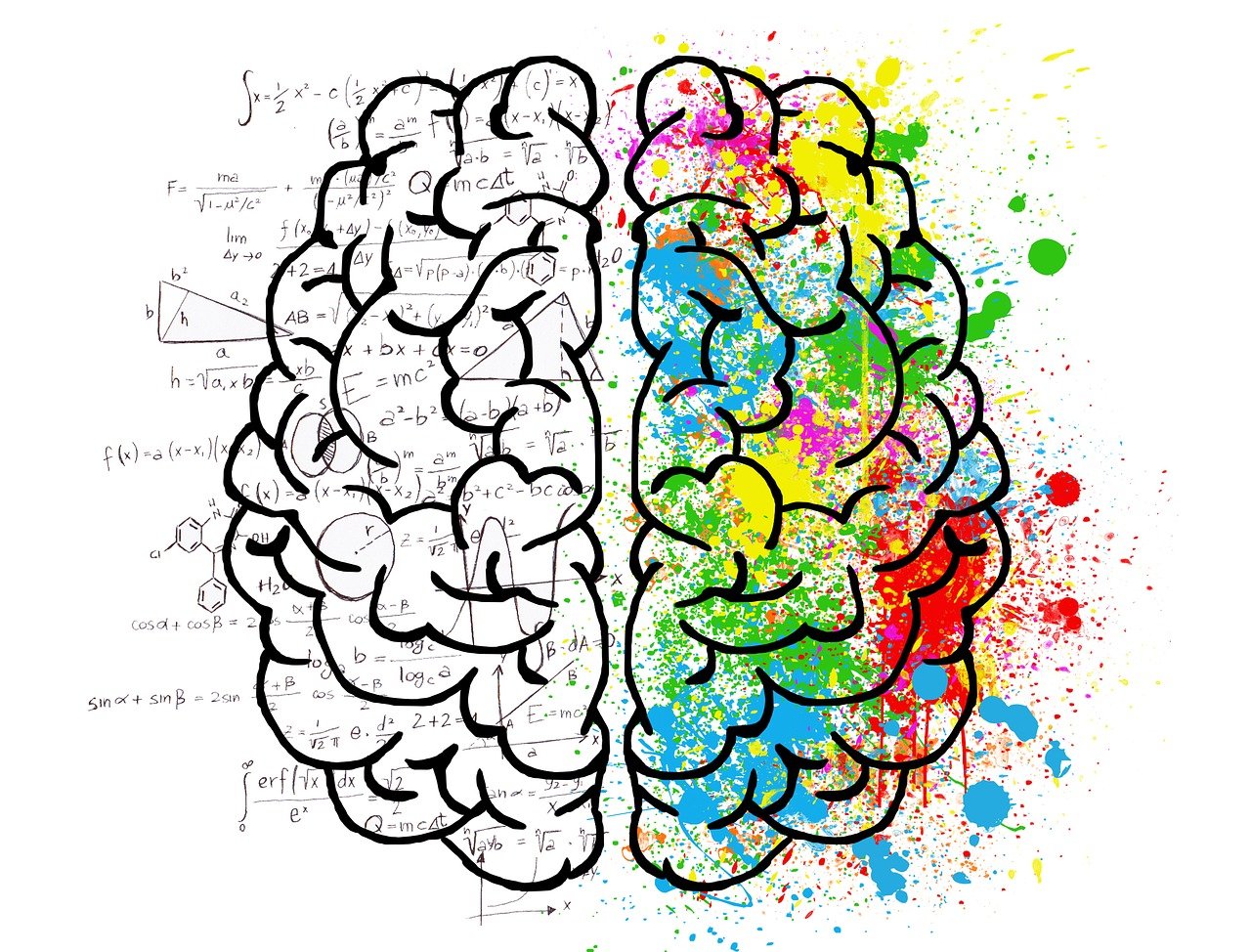Mahavidyas, in Hindu philosophy, represent the absolute manifestation of nature, or what we call prakriti. To understand their significance, it’s helpful to compare them with the concept of Sankhya, a philosophical system that also deals with the relationship between purusha (consciousness) and prakriti (nature). However, there’s a key difference: while Sankhya takes a more agnostic approach, presenting the universe in a detached, almost clinical way, the Mahavidyas bring this relationship down to a more relatable, human level. Sankhya treats purusha and prakriti as abstract, with no emphasis on devotion or emotion. But Mahavidyas? They embody that connection with nature in a way that feels personal, dynamic, and deeply human.
You might be wondering, why compare these two at all? What’s the link between Sankhya and the Mahavidyas?
Well, Mahavidyas, being a form of the goddess, symbolize the same principle of prakriti—the essential energy or nature that seeks unity with Shiva, who represents purusha. So, they aren’t just philosophical concepts floating above human understanding. They are the living, breathing representation of that same cosmic dance between purusha and prakriti, but expressed through powerful feminine forms that connect deeply with human experiences—whether it’s overcoming fear, harnessing strength, or embracing wisdom. Unlike the more distant and theoretical perspective of Sankhya, Mahavidyas are about understanding our own lives in relation to these divine energies (Shakti).

Table of Contents
The feminine prakriti
In tantric traditions, nature (prakriti) is seen as inherently feminine, while consciousness (purusha) is considered masculine. Nature, or prakriti, is dynamic, ever-changing, and responsible for all forms of creation and multiplicity. On the other hand, purusha is the singular, unchanging consciousness that simply is. It doesn’t create or evolve on its own—it’s like a still, quiet observer, while prakriti constantly brings new life into existence.
What makes this even more fascinating is that, according to these traditions, both masculine and feminine aspects are present in all living beings—regardless of whether someone has a male body, a female body, or even identifies as Tritiya Prakriti (a term used for the transgender community in ancient texts). In every person, there is a unique interplay (leela) of these energies. In a person born in a male body, there’s a stronger presence of masculinity, but the feminine aspect still exists, though subtler. Likewise, in those born in female bodies, femininity is the dominant energy, but masculinity plays a supporting role. In this balance, a dance between the masculine and feminine energies within all of us makes life itself possible. Just like a Yin-Yang.
Human Prakriti
When we look at the process of creation on the human level, it’s prakriti, the feminine energy, that’s responsible for generating life. The masculine, Purusha, remains constant and singular, but it’s through the feminine that it multiplies and brings forth new forms.
Think of it like this: in human reproduction, the male body doesn’t directly create life—it provides the seed, but it’s the female body, symbolizing prakriti, that nurtures and gives birth to new life. It’s the feminine principle that takes the spark of consciousness from purusha and transforms it into something tangible, much like how a child is born from the union of both energies.
Masculinity and femininity, as we often see them, aren’t complete on their own. Masculine energy may have strength and drive, but it often lacks the deep compassion necessary for nurturing. On the other hand, feminine energy is full of compassion and care, but it doesn’t always have the aggression needed to fight for resources and sustain creation. Nature balances this by combining both energies in every being. This balance has been evolving for millions of years, shaping not just humans but all life forms. The truth is, no one is purely male or purely female, regardless of their physical body. Its all about balance.
Even the Tritiya Prakriti (transgenders) embody this balance in unique ways. Some may have a male body but express more feminine traits internally, while others may have a female body with stronger masculine traits. This shows that none of us, regardless of gender, are “complete” in the sense of being purely one or the other. We all contain a mix of these energies, and that’s where tantra comes in.
But let’s not assume Tantra by its modern name and depictions that the West has given. It’s not about sex, it’s beyond sex. It’s dangerous if not practiced properly which may even make you mentally disturbed. Hence, I have kept informational aspects only below, not the practice aspect.
Tantra, an overview.
Tantra starts with this very idea—the recognition that everyone, regardless of their gender, possesses both masculine and feminine energies. In males, the masculine side is usually dominant, while in females, the feminine side tends to be more pronounced. But here’s the key: whether you’re male, female, or anywhere in between, you still have both energies within you. This isn’t just about transgender identities or gender fluidity or wokeism or whatever you say—this is a fundamental truth of human nature. One needs to comprehend all for sure.
Tantra is about expanding the dormant energy (femininity) within you and ultimately uniting it with Purusha, or pure consciousness.
It’s not about identifying oneself as “I am male” or “I am female” like what West does. It’s about expanding and comprehending the identity.
Also, it is not as simple as it sounds. This process involves understanding these energies on a much deeper level. It’s about moving beyond the surface and tapping into higher dimensions of awareness, where this balance between masculine and feminine becomes not just a philosophical idea but a lived reality.
To truly grasp this concept, we need to elevate our understanding, seeing ourselves not just as men or women, but as beings who hold within us a vast and complex leela of energies. Only then can we begin to appreciate the wisdom of tantra and the union of purusha and prakriti.
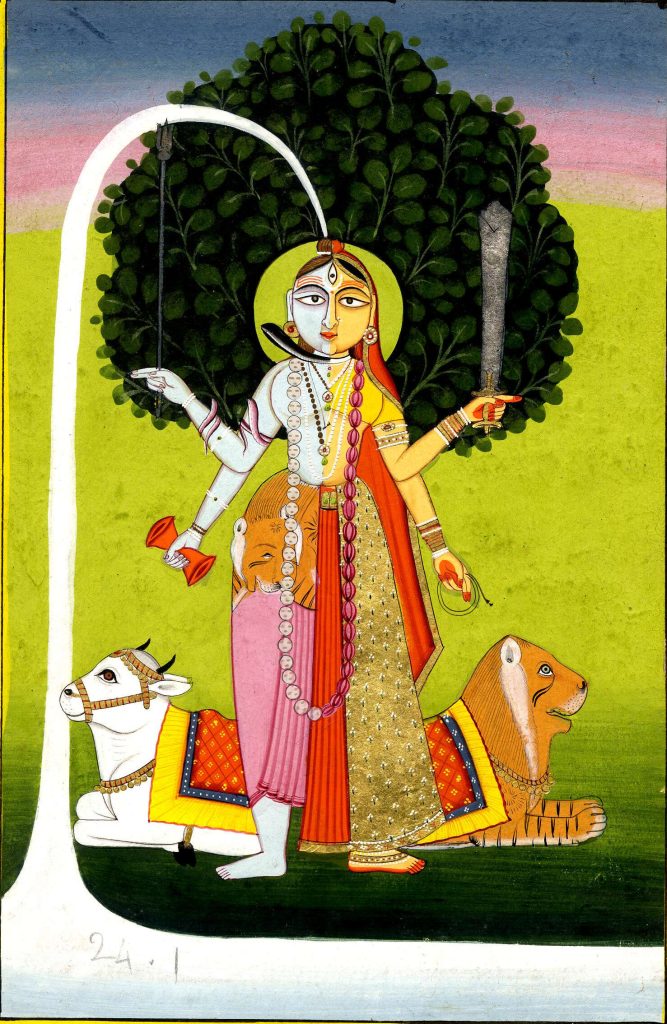
The higher dimension of understanding and Mahavidyas.
Now let’s talk about that other dimension—the one that goes beyond the physical body. Once you transcend the surface reality of your body and senses, you start to realize that your ego, your sense of “I” (what we call Aham), was never really your true self or consciousness. Your physical identity—whether you have a male, female, or Tritiya Prakriti body—doesn’t matter on this higher plane of understanding. Here, everything within you—your senses, your knowledge, your wisdom—are all considered feminine. The only masculine force is Purusha, or in this case, Mahakala, the controller of time itself.
When you think of yourself as “I” or “Mine”, this identity is actually feminine—it’s Prakriti seeking union with its counterpart, Purusha. In other words, the part of you that clings to “identity and form” is always searching for something greater, something beyond itself.
Do you realize why your ego (identity) or desires never get satisfied?
It’s looking for its Mahakala, its timeless consciousness.
So on higher dimensional thinking, Aham is never masculine, it doesn’t matter whether you have a male body or a female body. Part of your Aham is dormant in you as feminine which lives as you, and, you should raise it and expand it.
Raising the dormant identity within you.
Mahakali
According to the concept of Mahavidya, these dormant identities or energies within you can be categorized into ten different forms, each representing a powerful feminine force. The Mahavidyas are considered the highest expressions of this feminine energy, each embodying a distinct aspect of the divine. It all begins with time itself—Mahakali, the first and most essential feminine force. Time is what pulls us towards life, what keeps everything moving. If you’ve ever studied general relativity, you might find this concept resonates.
In a way, spacetime is Mahakali. The gravitational pull of a black hole, the unstoppable force of gravity—these are just different variations of this primal feminine energy.
Some people like to call the dormant energy Kundalini also, however, the Kundalini way is different which we can discuss later.
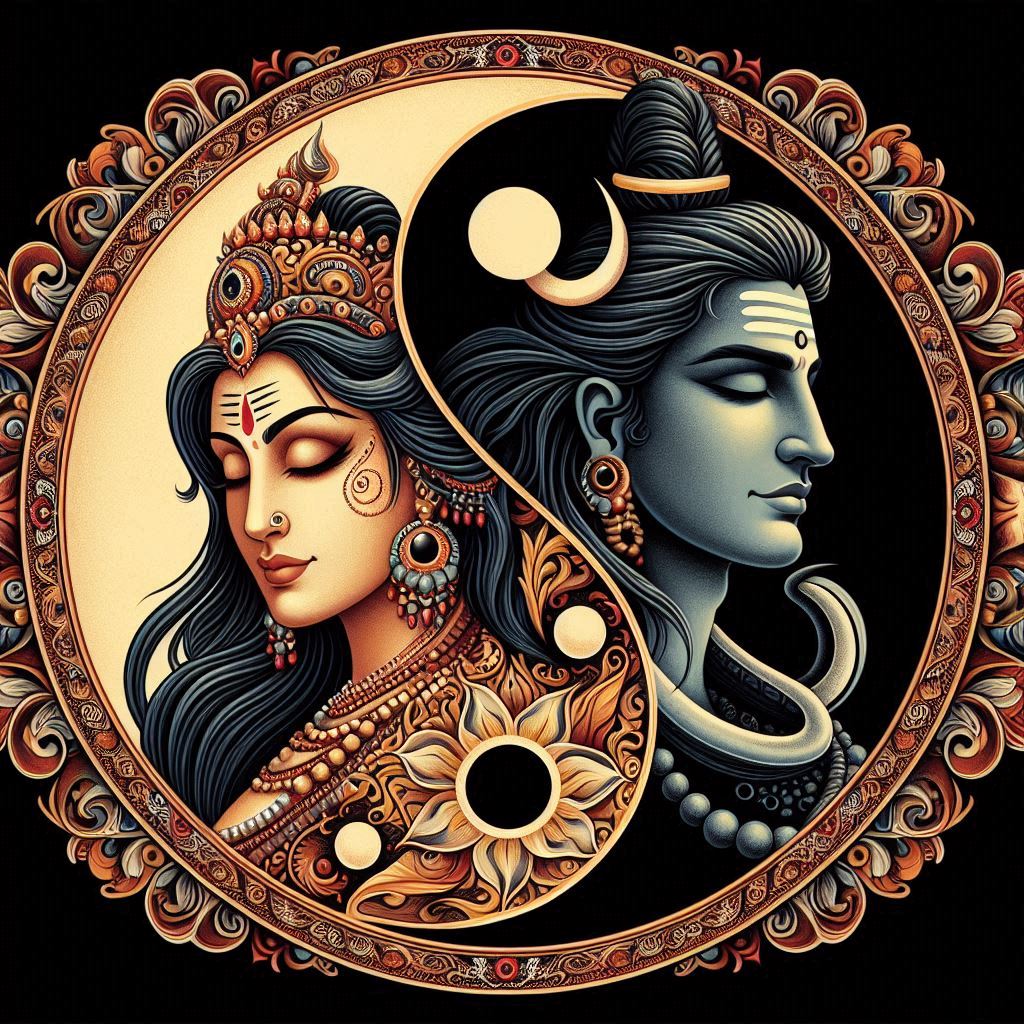
Other 9 Mahavidyas.
The other nine Mahavidyas are equally important, representing diverse facets of this eternal dance and union between prakriti and purusha. These energies aren’t just mythological abstractions that post-modernists claim but are deeply embedded within our psychological and existential framework. They symbolize the progression from ego to transcendence, from the mundane to the metaphysical.
Tara
Let’s look into Tara, for instance. She is compassion embodied, the force that rescues you from life’s turmoil, much like how your emotions and instincts often pull you away from self-destructive patterns.
Scientifically speaking, you can compare Tara to the survival instincts wired into the neurobiology—those moments when an overwhelming force pulls us back from the brink, guiding us through emotional chaos. This could be seen as Prakriti at work, ensuring our survival. Tara, in this sense, becomes that internal guide that leads us beyond the immediate ego, helping us navigate through the ocean of life with wisdom rather than brute survival. She is the Prakriti of the Survival Instinct.
Tripura Sundari
Then comes Tripura Sundari, the embodiment of beauty, not just physical beauty, but the beauty of pure nature. We spend our lives chasing superficial appearances, be it in material objects or even relationships, mistaking them for fulfillment. In physics, we often hear that beauty lies in symmetry, in patterns that emerge from chaos. Similarly, Tripura Sundari represents the moment we realize that true beauty is symmetry between our internal and external worlds—where the balance of masculine and feminine creates harmony. Consciousness itself, in its purest form, is that perfect symmetry, the ultimate beauty that we often fail to see amidst the distractions of the world. Tripura Sundari means converting your desires towards the higher purpose of union between Purusha and Prakriti.
Bhuvaneshwari
Bhuvaneshwari, the vast expanse of space, comes next. She is the cosmic womb that holds all creation. If you consider the modern understanding of the universe, space itself is more than just a backdrop for celestial objects—it’s an active force. Dark matter, dark energy, and the fabric of spacetime itself are what hold everything together. In the same way, Bhuvaneshwari is the space within us that holds our existence. Without space, there’s no interaction, no movement. She is the expansive nature of Prakriti that allows for the play of creation and destruction. The body, and the mind—all exist within this inner space with an existential seed called desire.
Bhairavi
Bhairavi introduces a more intense energy, the fierce warrior that breaks down the ego. In psychological terms, we often speak of the “shadow self”—those parts of our identity we don’t want to face, the fears, anger, and resentment we bury deep within. Bhairavi is that fierce force within us that brings these shadows to light, forcing us to confront them. Her energy is about inner transformation through destruction, much like how stress and struggle can lead to personal growth. This might remind you of how neurons build stronger connections through adversity. Without challenge, the mind stays stagnant. Similarly, Bhairavi forces the mind and ego to evolve through the heat of struggle.
Chhinnamasta
And then we have Chhinnamasta, the goddess of self-sacrifice, representing the decapitation of the ego itself. Think of this in terms of neuroscience.
The ego, the “I”, is essentially a construct of the brain’s default mode network, the constant churning of thoughts about who we are. When we meditate or experience ego-dissolution, like in transcendental experiences or even in altered states of consciousness, that network quiets down. Chhinnamasta reflects this state of surrender, the moment we let go of the constant identification with the self and open up to a larger reality. It’s not about death in a literal sense, but the death of the false self that keeps us confined to our bodies and worldly desires.
Dhumavati
Dhumavati shifts the focus to detachment. She represents the state of “after the fire,” the ashes that remain once desire has been burnt away. In today’s fast-paced world, attachment to materialism, identities, and ambitions keeps us grounded in the physical plane. But science shows us that everything is temporary—our bodies are constantly changing, evolving, and decaying. The second law of thermodynamics, entropy, tells us that the universe is heading toward disorder.
Dhumavati embodies this inevitability. She represents the wisdom that comes from understanding the transient nature of life. It encourages us to let go and accept that dissolution is a part of the cycle.
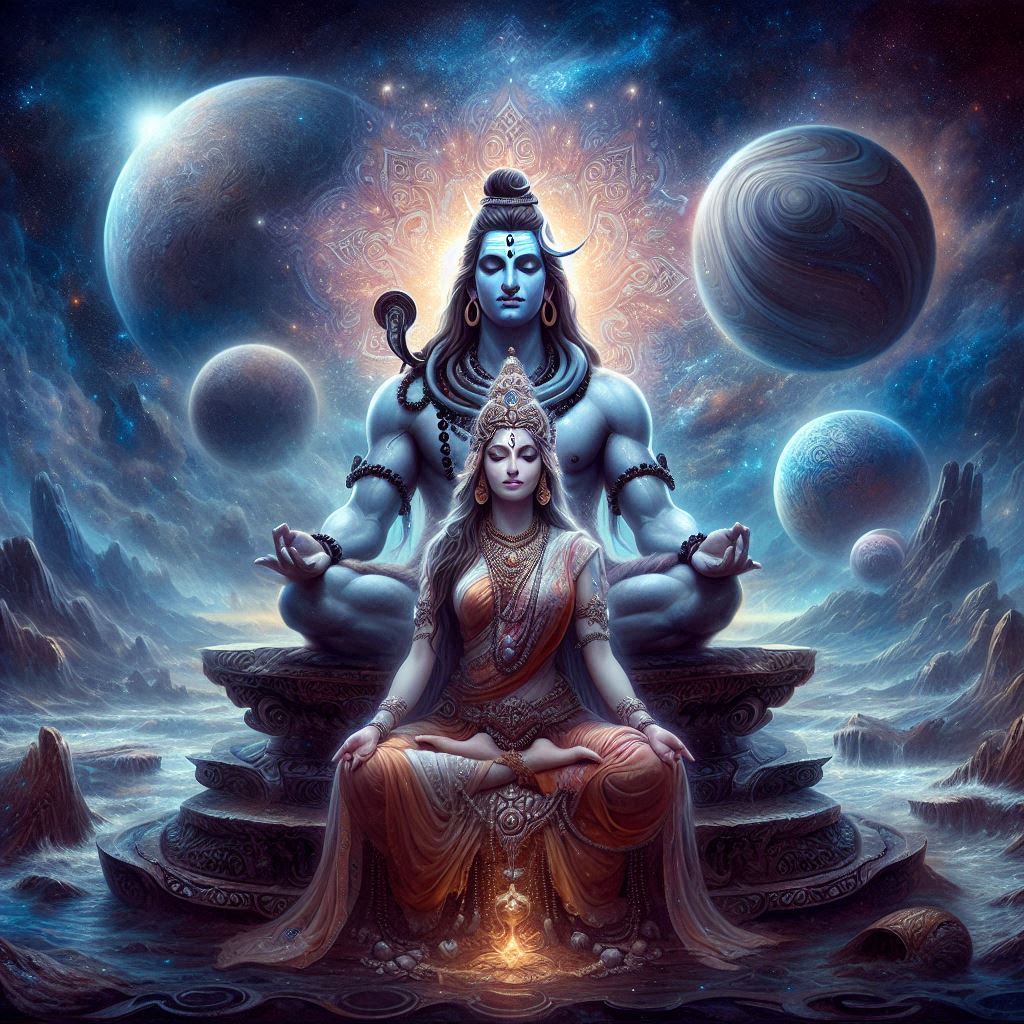
Baglamukhi
Then there’s Baglamukhi, who represents the power to still the mind. The human brain is a noisy place, constantly firing thoughts and ideas. But in silence, we find clarity.
Modern research into mindfulness and meditation shows how slowing down the brain’s chatter can lead to greater cognitive control and emotional regulation. Baglamukhi is the embodiment of this stillness, where the feminine energy within stops the restless mind from its ceaseless activity, allowing for the emergence of pure consciousness. This stillness is crucial for connecting with the dormant energy within us, the prakriti that is waiting to align with Purusha.
Matangi
As we move to Matangi, we encounter wisdom that comes from unconventional sources. In a world obsessed with conformity, it’s the outsiders, the misfits, the ones who live on the fringes of society, who often offer the deepest insights. Matangi embodies this unconventional wisdom. Science itself thrives on thinking outside the box—every breakthrough, whether it’s in quantum physics or evolutionary biology, comes from questioning established norms.
Think of it in terms of Kuhn’s paradigm shift.
In the tantric path, Matangi is about that real wisdom that often comes when we look beyond the familiar, beyond the socially accepted, and tap into the deeper truths that don’t fit within traditional boundaries.
Kamalatmika
Kamala brings you full circle, showing that the journey isn’t about rejecting the material world but balancing it with spiritual understanding. She represents both material and spiritual prosperity. In today’s language, we might talk about achieving a balanced state of mind and life. Just as ecosystems thrive on balance, where every element supports the other, Kamala shows you material wealth and spiritual growth aren’t mutually exclusive. So understanding the leelas of Prakriti and Purusha is the key, with this you can live in abundance without becoming enslaved to them.
The key lies in recognizing that material success is just another expression of divine energy, one that flows naturally when we are aligned with our true nature.
That’s Mahavidya for you within you looking for Mahakala. In the same way, you cannot get Krishna without understanding Radha and Gopikas, you cannot get Shiva without understanding Prakriti and her manifestations.
